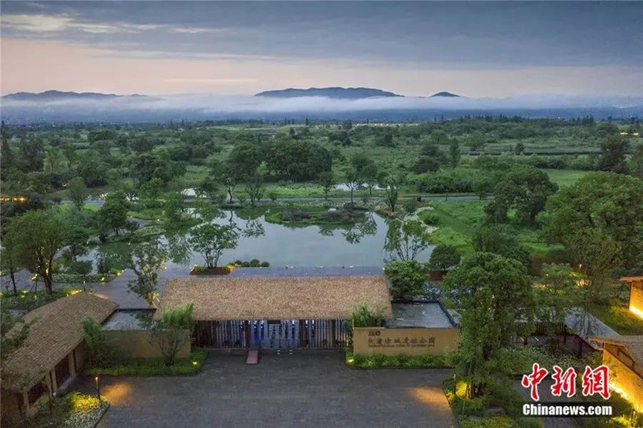On June 15, at the start of the 100-day countdown to the Hangzhou Asian Games, the torch-bearers performed the torch lighting ceremony at Hangzhou's Liangzhu Archaeological Ruins. On the same day, the official medals for the Hangzhou ASIAD was also unveiled. Entitled Shan Shui, the medal is characterized by the jade cong, a ritual article used for ceremonies dating back to the Liangzhu Culture.

The site of Liangzhu ancient city in Hangzhou, with its complex working water system and a broad range of jade artefacts, demonstrates a farming economy 5,000 years ago in the lower reaches of the Yangtze River around Taihu Lake.
On a par with the ancient Egyptian, Sumerian and Harappan civilizations of the same period, Liangzhu Archaeological Ruins was designated a World Heritage Site by the 43rd session of the UNESCO World Heritage Committee in July 2019.
Advanced water system
The location of Liangzhu ancient city was chosen with clear fore-thought—on a central platform surrounded by hills on three sides.
As a waterside city, Liangzhu had man-made channels totaling 32 kilometers in length. Eight water gates were found in the inner city walls to connect the water systems inside and outside the city.
The water conservancy system on the periphery of Liangzhu consisted of a long dyke in front of the mountains, a high dam at the mouth of the valley and a low dam on the plain. The water storage area could extend to 13 square kilometers with a storage capacity of 45 million cubic meters. Such a water system not only prevented flooding but also facilitated irrigation and transportation, eventually led to large-scale rice production.
Time-honored jade culture
Liangzhu jade culture was the most representative of prehistoric jade culture in China.
For Liangzhu people, jade objects as a symbol of power and identity were mainly used in worshipping ceremonies marking social status. Among the jade articles unearthed so far, three types stand out: cong (a long hollow piece of jade with rectangular sides) the most symbolic with each piece bearing a divine emblem; bi (a circular flat piece of jade with a hole in its center) the most common of all the large jade objects; and yue (battle-axe shaped jade) the scepter of royal power. Cong and bi in Liangzhu were eventually incorporated into the Six Auspicious Jade Ritual Vessel system of the Shang and Zhou Dynasties.

Liangzhu jade culture exerted a widespread influence on contemporary and successive cultures near and far, making great contribution to the Chinese ceremonial civilization.
(编辑:张瑛)